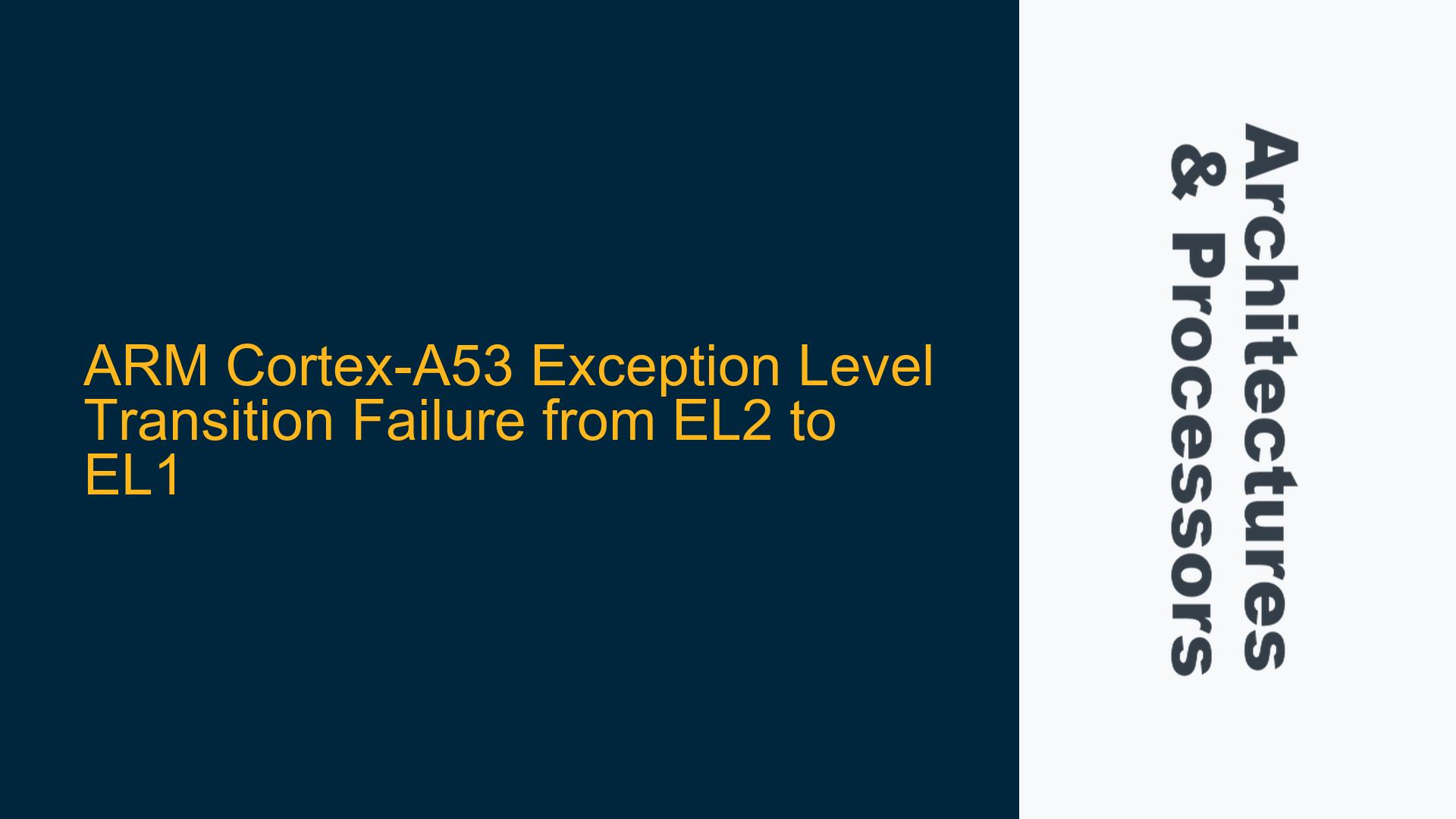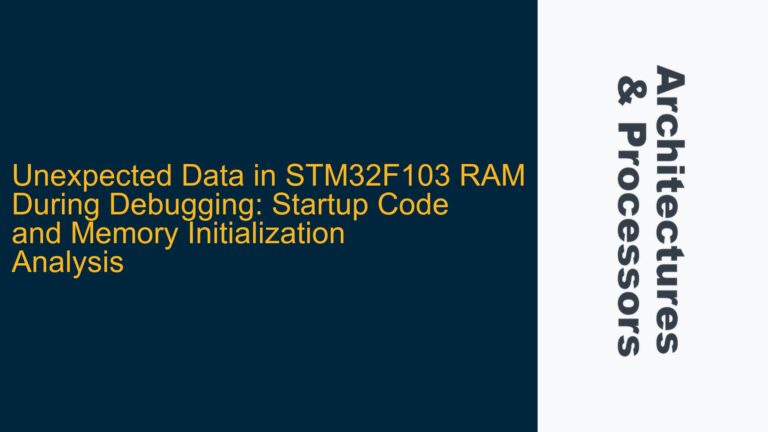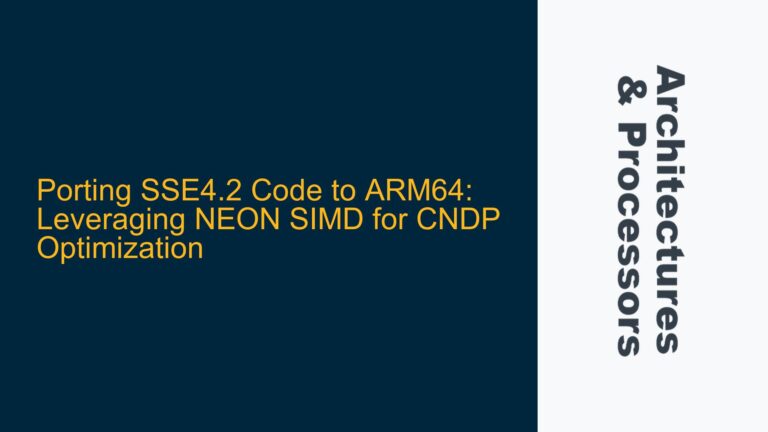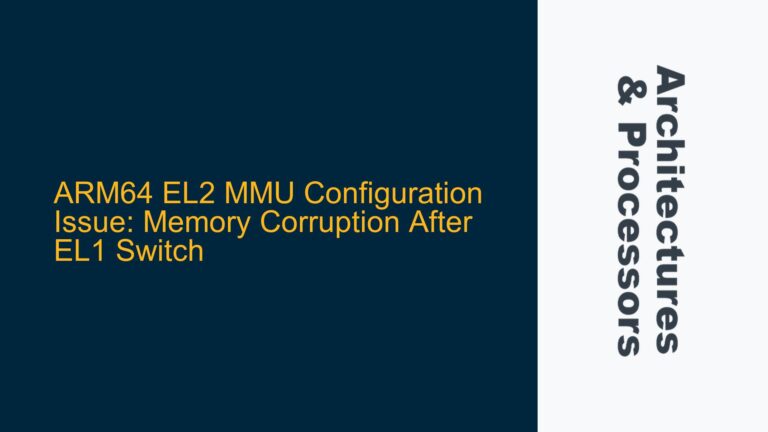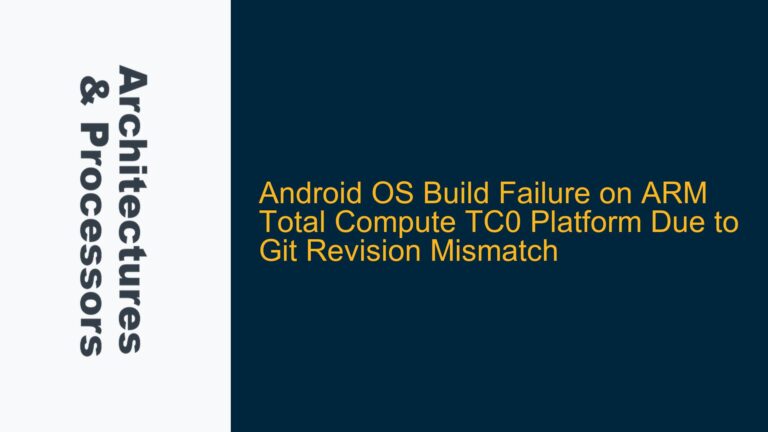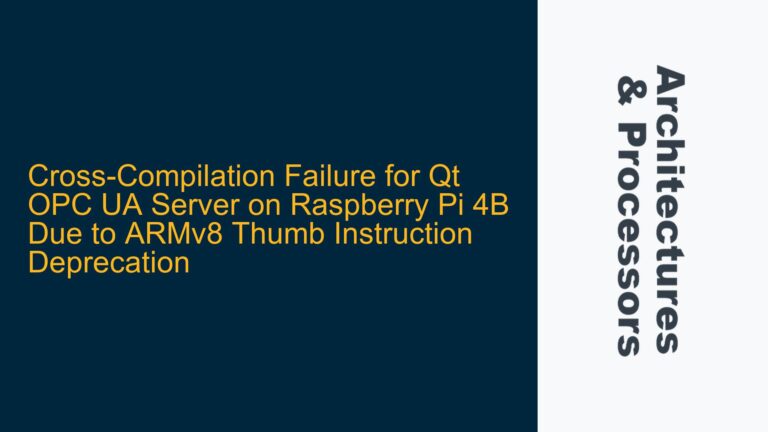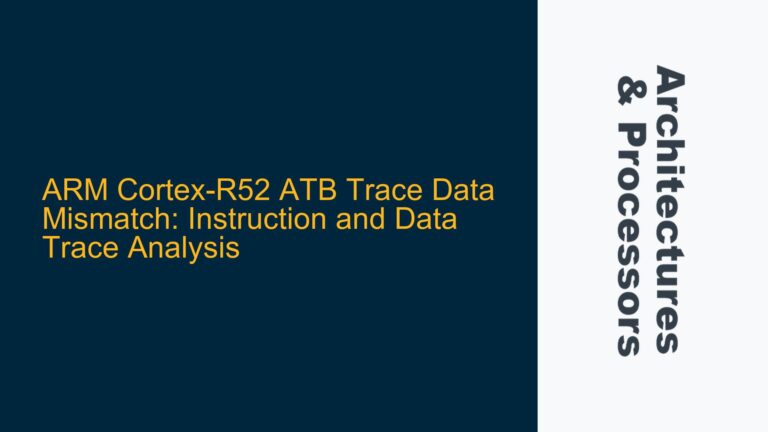ARM Cortex-A53 Exception Level Transition Failure from EL2 to EL1
The ARM Cortex-A53 processor, part of the ARMv8-A architecture, supports multiple exception levels (ELs) that provide hierarchical privilege and security isolation. Transitioning between these exception levels is a critical operation, especially during boot sequences or when switching between hypervisor and guest operating systems. A common issue arises when attempting to transition from Exception Level 2 (EL2) to Exception Level 1 (EL1), where the processor hangs after executing the ERET instruction. This issue can stem from misconfigurations in system registers, incorrect state handling, or improper synchronization. Below, we delve into the specifics of this problem, its potential causes, and detailed troubleshooting steps.
Misconfigured System Registers and State Handling During EL2 to EL1 Transition
The transition from EL2 to EL1 involves configuring several system registers to ensure the processor state is correctly set up for the target exception level. The ERET instruction is used to return from an exception, and it relies on the ELR_EL2 (Exception Link Register) and SPSR_EL2 (Saved Program Status Register) to determine the return address and processor state. If these registers are not configured correctly, the processor may fail to transition or hang.
Key Registers and Their Roles
ELR_EL2: Holds the return address for the exception return. This must point to the instruction where execution should resume in EL1.SPSR_EL2: Contains the processor state (e.g., execution mode, interrupt masks) to be restored upon exception return. For transitioning to EL1, this register must be configured with the appropriate flags, such asSPSR_ELX_DAIF(masking interrupts) andSPSR_ELX_EL1H(selecting EL1 with SP_EL1).HCR_EL2(Hypervisor Configuration Register): Controls the behavior of EL2, including whether EL1 is 64-bit (HCR_EL2_RWbit).CNTHCTL_EL2(Counter-timer Hypervisor Control Register): Configures timer access for EL1. TheCNTHCTL_EL2_EL1PCENandCNTHCTL_EL2_EL1PCTENbits must be set to allow EL1 access to the physical counter.CPTR_EL2(Architectural Feature Trap Register): Controls trapping of certain instructions and features. TheCPTR_EL2_RES1value ensures that no unnecessary traps are enabled.CPACR_EL1(Architectural Feature Access Control Register): Enables access to floating-point and SIMD registers in EL1.
Common Misconfigurations
- Incorrect
SPSR_EL2Configuration: If theSPSR_EL2register does not specify the correct target exception level (EL1) or interrupt masks, the processor may fail to transition or enter an undefined state. - Improper
ELR_EL2Setup: If theELR_EL2register does not point to a valid instruction in EL1, the processor will jump to an invalid address, causing a hang. - Missing
ISBSynchronization: TheISB(Instruction Synchronization Barrier) ensures that all previous instructions are completed before executingERET. Without this, the processor may attempt to return before the state is fully configured. - Uninitialized Timer or GIC Registers: If the timer or Generic Interrupt Controller (GIC) registers are not properly configured, the processor may encounter unexpected exceptions or hangs.
Potential Causes of EL2 to EL1 Transition Failure
The failure to transition from EL2 to EL1 can be attributed to several factors, ranging from incorrect register configurations to hardware-specific quirks. Below are the most likely causes:
1. Incorrect SPSR_EL2 Configuration
The SPSR_EL2 register must be configured with the correct flags to ensure a smooth transition to EL1. Specifically:
- The
SPSR_ELX_EL1Hflag must be set to indicate that EL1 should use SP_EL1. - The
SPSR_ELX_DAIFflag must be set to mask interrupts during the transition.
If these flags are not set correctly, the processor may fail to transition or enter an undefined state.
2. Invalid ELR_EL2 Address
The ELR_EL2 register must point to a valid instruction in EL1. If this register contains an invalid or misaligned address, the processor will jump to an incorrect location, causing a hang or crash.
3. Missing or Incorrect ISB Instruction
The ISB instruction ensures that all previous register configurations are completed before executing ERET. Without this synchronization, the processor may attempt to return before the state is fully configured, leading to unpredictable behavior.
4. Improper Timer and GIC Configuration
The ARM Cortex-A53 relies on the system timer and GIC for interrupt handling and timing. If these components are not properly configured, the processor may encounter exceptions or hangs during the transition. Key considerations include:
- Enabling EL1 access to the physical counter via
CNTHCTL_EL2. - Configuring the GIC system registers in EL2 and enabling their use in EL1 via
ICC_SRE_EL2.
5. Hardware-Specific Quirks
Certain ARM implementations, such as the i.MX8 Mini, may have hardware-specific quirks or errata that affect exception level transitions. These issues may require workarounds or specific configurations not covered in the ARM architecture reference manual.
Detailed Troubleshooting Steps and Solutions
To resolve the EL2 to EL1 transition failure, follow these detailed steps:
1. Verify SPSR_EL2 Configuration
Ensure that the SPSR_EL2 register is configured with the correct flags:
mov x9, SPSR_ELX_DAIF | SPSR_ELX_EL1H
msr spsr_el2, x9
This sets the target exception level to EL1 and masks interrupts during the transition.
2. Validate ELR_EL2 Address
Ensure that the ELR_EL2 register points to a valid instruction in EL1:
adr x9, .Ltarget
msr elr_el2, x9
The .Ltarget label should be a valid entry point in EL1.
3. Insert ISB Synchronization
Add an ISB instruction before ERET to ensure all previous configurations are completed:
isb
eret
4. Configure Timer and GIC Registers
Ensure that the timer and GIC registers are properly configured:
// Enable EL1 access to the physical counter
mrs x9, cnthctl_el2
orr x9, x9, CNTHCTL_EL2_EL1PCEN | CNTHCTL_EL2_EL1PCTEN
msr cnthctl_el2, x9
// Configure GIC system registers
mrs x9, ICC_SRE_EL2
mov x10, ICC_SRE_EL2_ENABLE | ICC_SRE_EL2_SRE
orr x9, x9, x10
msr ICC_SRE_EL2, x9
5. Check for Hardware-Specific Issues
Consult the i.MX8 Mini reference manual and errata documents for any hardware-specific issues or workarounds related to exception level transitions.
6. Debugging with Breakpoints and Traps
Use breakpoints and exception traps to debug the transition process. For example, set a breakpoint at the ERET instruction and inspect the system registers to ensure they are correctly configured.
7. Validate EL1 Execution
After transitioning to EL1, validate that the processor is executing in the correct mode and that interrupts are properly masked. This can be done by checking the CurrentEL register and inspecting the interrupt mask flags.
By following these steps, you can systematically identify and resolve the issue preventing the transition from EL2 to EL1 on the ARM Cortex-A53 processor. Proper configuration of system registers, synchronization, and hardware-specific considerations are key to ensuring a successful transition.
